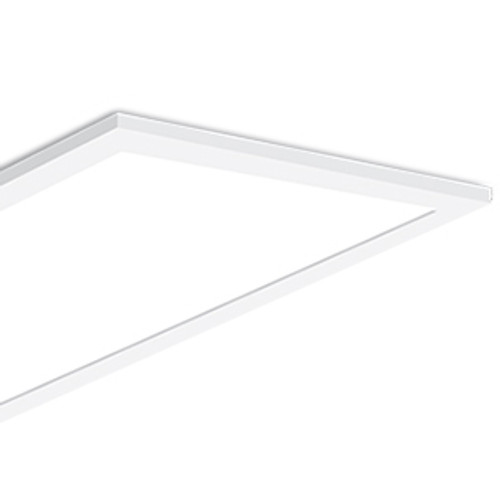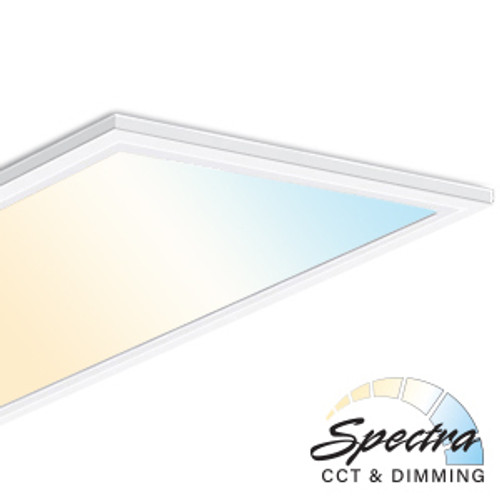-

Lighting and Supplies
Lighting and Supplies LS-55566 LED 2 X 4 Panel- 40W/40K/5000 Lumens-120-277V/Dimm
Add to Cart$66.53 -

Lighting and Supplies
Lighting and Supplies LS-5-5327 LED 2 X 2 Panel- 28W/40K/3556 Lumens- 120-277V/Dimm/V5 LED Panel
Add to Cart$40.26 -

Lighting and Supplies
Lighting and Supplies LS-5-5337 LED 2 X 4 Panel- 46W/50K/5934 Lumens- 120-277V/Dimm/V5 LED Panel
Add to Cart$105.53 -

Lighting and Supplies
Lighting and Supplies LS-5-5397 Wall Mount Only For Wireless Remote For Spectra Panel LED Panel
Add to Cart$3.62 -

Lighting and Supplies
Lighting and Supplies LS-5-5398 Wireless Wall Remote For LED Spectra Panel LED Panel
Add to Cart$10.85 -

Lighting and Supplies
Lighting and Supplies LS-5-5399 Wireless Remote For LED Spectra Panel- LED Panel
Add to Cart$10.85 -

Lighting and Supplies
Lighting and Supplies LS-5-5400 LED 2 X 2 Spectra Panel- 40W/30-50K Cct/4400 Lumens- 100-277V/Dimm LED Panel
Add to Cart$81.71 -

Lighting and Supplies
Lighting and Supplies LS-5-5402 LED 2 X 4 Spectra Panel- 50W/30-50K Cct/5600 Lumens- 100-277V/Dimm LED Panel
Add to Cart$127.99 -

Lighting and Supplies
Lighting and Supplies LS-5-5404 LED 1 X 4 Spectra Panel- 40W/30-50K Cct/4240 Lumens- 100-277V/Dimm LED Panel
Add to Cart$82.06 -

Lighting and Supplies
Lighting and Supplies LS-5-5411 LED 2 X 2 Panel- 28W/40K/3500 Lumens- 120-277V/Dimm/V6 LED Panel
Add to Cart$71.58 -

Lighting and Supplies
Lighting and Supplies LS-5-5412 LED 2 X 2 Panel- 28W/50K/3500 Lumens- 120-277V/Dimm/V6 LED Panel
Add to Cart$72.94 -

Lighting and Supplies
Lighting and Supplies LS-5-5415 LED 2 X 2 Panel- 36W/50K/4500 Lumens- 120-277V/Dimm/V6 LED Panel
Add to Cart$68.14
LED Panel
In the contemporary landscape of architectural and functional lighting, LED panels stand out as a hallmark of innovation, offering sleek design, energy efficiency, and superior illumination. As a versatile lighting solution, LED panels have found their place in a myriad of settings, ranging from educational institutions and medical facilities to office buildings, small businesses, and residential basements. This article explores the dynamics of LED panels, including their types, such as back-lit and edge-lit, sizes like 2x2 and 2x4, and the diverse locations and industries that benefit from their adoption.
The Evolution of LED Panels
LED panel lights represent a significant leap forward from traditional lighting solutions, offering a modern, efficient, and aesthetically pleasing option for illuminating spaces. Unlike the older fluorescent fixtures, LED panels distribute light evenly, providing a smooth and uniform light source that enhances the ambiance of any environment.
Types of LED Panels
LED panels come in two main types: back-lit and edge-lit, each offering unique benefits and characteristics.
Back-lit Panel: These panels feature LEDs placed directly behind the panel's diffuser, resulting in a bright, uniform light that efficiently illuminates large areas. Back-lit panels are known for their effectiveness in spaces requiring significant light output and energy efficiency.
Edge-lit Panel: In edge-lit panels, LEDs are positioned around the edges of the panel, with light being distributed across the surface through a light guide plate. This design allows for ultra-thin panels, making edge-lit options ideal for sleek, modern interiors where aesthetics are paramount.
Sizes of LED Panels
The most common sizes for LED panels are 2x2 and 2x4 feet, catering to various installation needs.
2x2 LED Panels: Perfect for drop ceilings and smaller spaces, 2x2 panels are often used in areas like offices, schools, and medical examination rooms.
2x4 LED Panels: These larger panels provide more extensive coverage, making them suitable for illuminating spacious areas such as commercial lobbies, governmental buildings, and industrial facilities.
Locations and Industries Using LED Panels
The adaptability of LED panels means they are an excellent fit for numerous locations and sectors.
Educational Facilities: Schools and universities benefit from the even, flicker-free light of LED panels, creating optimal learning environments.
Medical Institutions: Hospitals and clinics require lighting that accurately represents colors and minimizes eye strain, making LED panels an ideal choice.
Office Buildings: LED office lights, particularly flat panel lights, offer a comfortable and productive workspace, reducing glare and eye fatigue.
Residential Basements and Small Businesses: In residential basements and small business premises, LED panels provide a cost-effective, energy-efficient lighting solution that enhances the appeal and functionality of the space.
LED Panel Versus LED Tube
As technology progresses, LED panels are increasingly replacing LED tubes in many applications. This shift is driven by several factors:
Aesthetics: LED panels offer a sleeker, more integrated look compared to traditional tube lighting, fitting seamlessly into modern architectural designs.
Energy Efficiency: While both LED tubes and panels are more efficient than fluorescent lighting, panels often provide better energy distribution, leading to additional savings.
Installation and Maintenance: LED panels are easier to install and maintain, especially in drop ceiling configurations, where they can replace old fluorescent fixtures without the need for extensive retrofitting.
Light Quality: LED panels provide a broader and more uniform light distribution, enhancing the visual comfort for occupants and reducing shadows and glare.
The Future of Lighting with LED Panels
The transition to LED panel lighting reflects broader trends towards energy efficiency, environmental sustainability, and the importance of creating spaces that are both functional and aesthetically pleasing. As the technology behind LED panels continues to evolve, we can expect even greater efficiency, versatility, and integration capabilities, further cementing their status as a preferred lighting solution across various industries.
Conclusion
LED panels embody the future of lighting, offering unparalleled versatility, energy efficiency, and design flexibility. From edge-lit panels that complement modern aesthetics to back-lit panels that illuminate large areas with ease, these lighting solutions cater to a wide range of needs and preferences. As they continue to replace traditional LED tubes and other outdated lighting options, LED panels are setting new standards for what is possible in both new constructions and retrofit projects across educational, medical, governmental, commercial, industrial, and residential sectors. Whether lighting up a classroom, office, hospital, or home, LED panels are proving to be an indispensable part of creating environments that are both inviting and functional.
